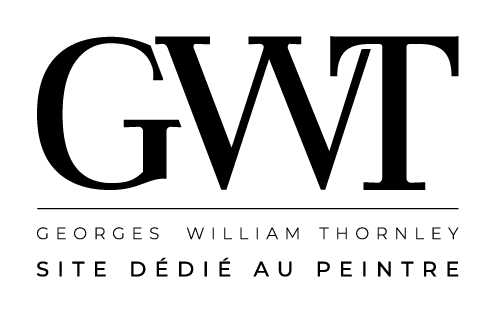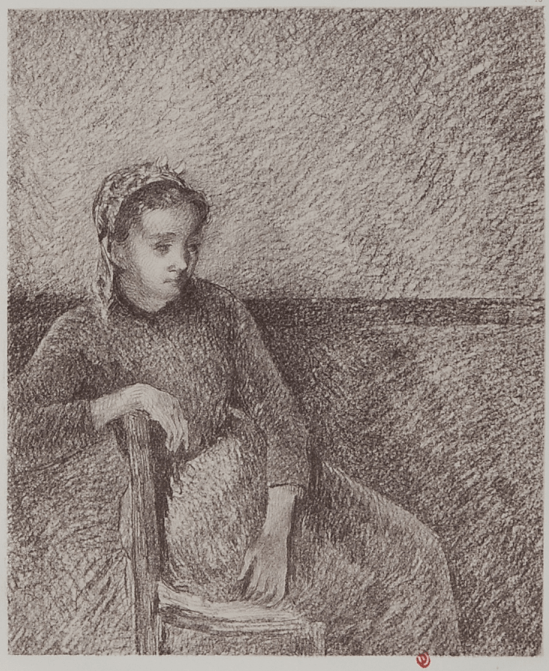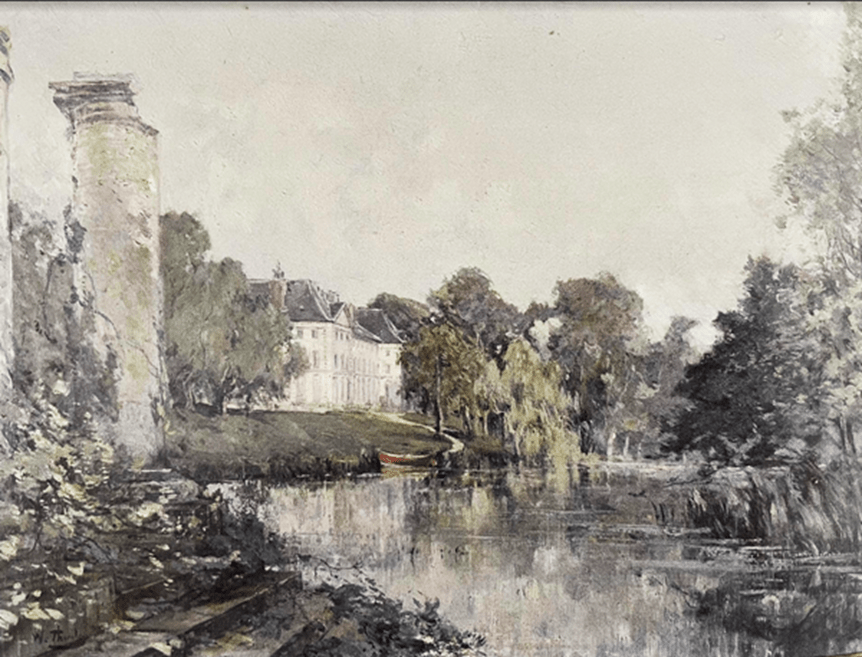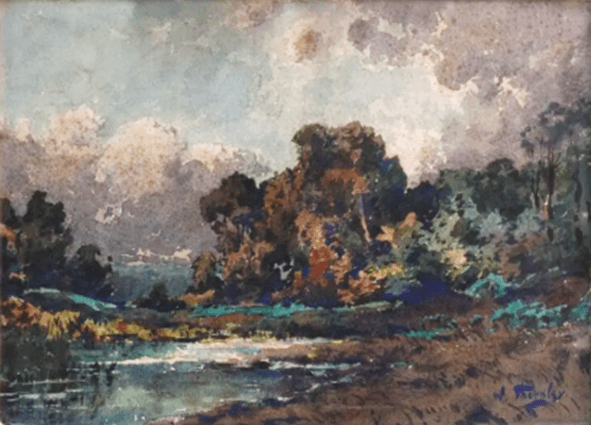Jeune paysanne. Lithographie de William Thornley (1857-1935) d’après Camille Pissarro (1830-1903). Origine du visuel : INHA (0618_doucet_FEST617) – Sous licence ouverte. Il s’agit de la 13ème planche de l’album édité chez Hessèle en 1900 et imprimé en 108 exemplaires par R. Engelmann (Atelier Belfond). Dimensions de la vue : 23,5 x 19,7 cm.
Cette lithographie de William Thornley a pour modèle une huile sur toile réalisée en 1882 par Camille Pissarro (55 × 46 cm). Cette toile (Paysanne assise) fait aujourd’hui partie des collections du High Museum of art d’Atlanta aux Etats-Unis. A l’origine léguée en 1904 à la femme de l’artiste, Julie Pissarro, elle devient ensuite la propriété de Georges Manzana Pissarro en 1921. Elle fut ensuite vendue à plusieurs reprises à des acquéreurs américains avant d’être acquise par le High Museum of art d’Atlanta aux Etats-Unis.( Collection Doris et Shouky Shaheen – Numéro d’accession 2019.154).
La provenance détaillée de cette œuvre aux intonations « pointillistes » figure en page 460 (réf 690) du volume deux du catalogue raisonné du Wildenstein Institute (Joachim Pissarro et Claire Durand-Ruel Snollaerts)

Jeune paysanne. Lithograph by William Thornley (1857-1935) from a model of Camille Pissarro (1830-1903). Origin of the visual: INHA (0618_doucet_FEST617) – Under open license. This is the 13th plate of the album published by Hessèle in 1900 and printed in 108 copies by R. Engelmann (Atelier Belfond). Dimensions of the view: 23.5 x 19.7 cm.
This lithograph by William Thornley is based on an oil on canvas made in 1882 by Camille Pissarro (55 × 46 cm). This canvas (Seated Peasant Woman) is now part of the collections of the High Museum of Art in Atlanta, United States. Originally bequeathed in 1904 to the artist’s wife, Julie Pissarro, it then became the property of Georges Manzana Pissarro in 1921. It was then sold several times to American buyers before being acquired by the High Museum of Art in Atlanta, United States. (Doris and Shouky Shaheen Collection – Accession number 2019.154).
The detailed provenance of this work with « pointillist » intonations appears on page 460 (ref 690) of volume two of the Wildenstein Institute catalogue raisonné (Joachim Pissarro and Claire Durand-Ruel Snollaerts)



